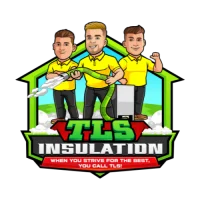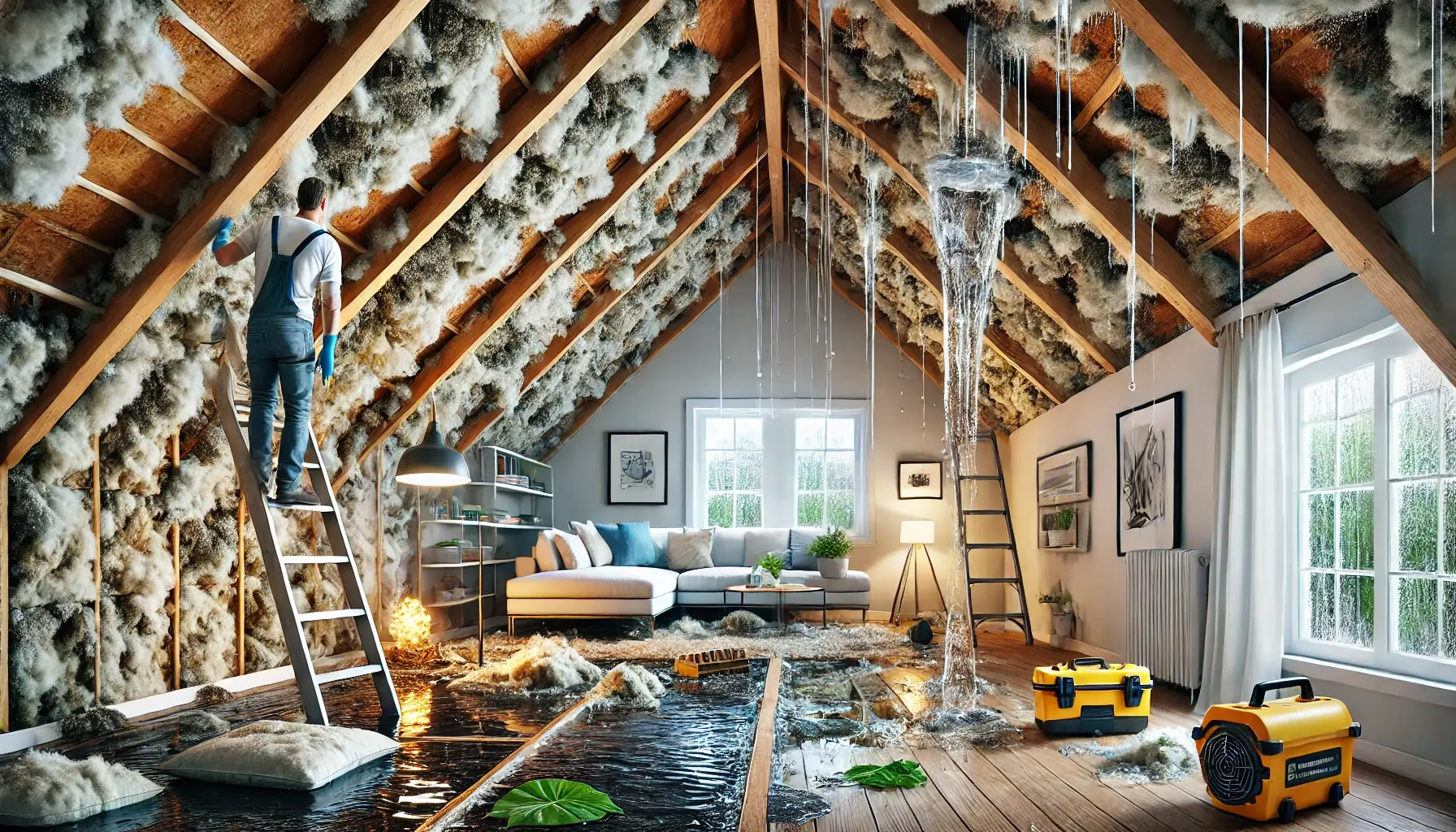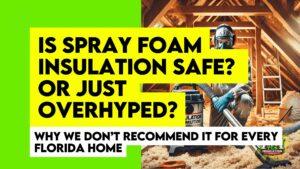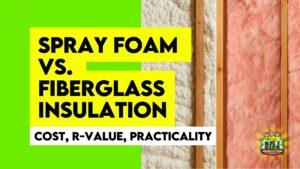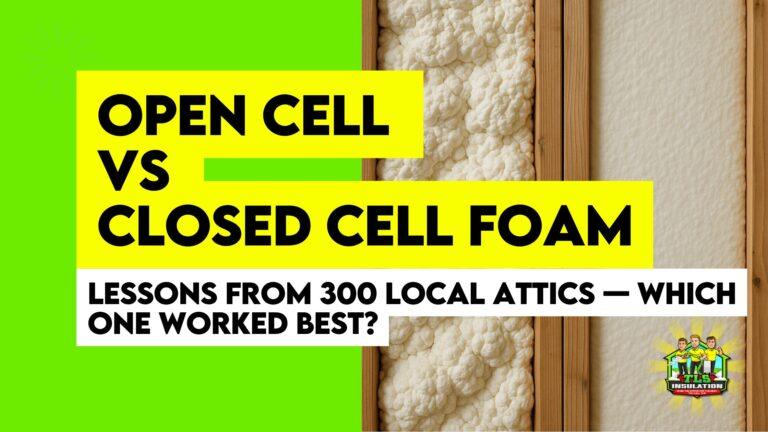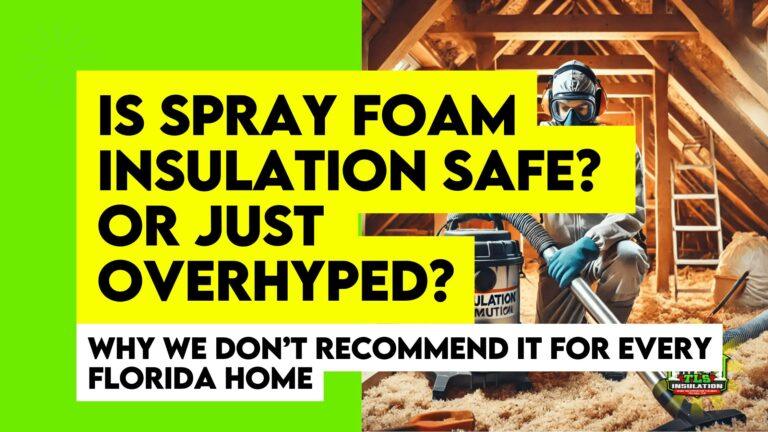Florida’s weather is mostly humid, so what happens if insulation gets wet? When insulation gets wet, it doesn’t just lose effectiveness but it becomes a breeding ground for mold, drastically impacting indoor air quality.
So furthermore, if insulation gets wet will it mold? The answer is a Quick yes! Wet insulation quickly absorbs moisture, compromising its thermal resistance and leading to water-damaged insulation that drives up energy bills.
Worse yet, if left untreated, wet insulation will mold within 24-48 hours, posing serious health risks. A 10% leak in your air ducts can increase your energy usage by 30%—imagine what a soaked batt of insulation could do!
So, It’s crucial to act fast, inspect your insulation for signs of moisture, and seek professional help to avoid costly repairs.
Can Insulation Get Wet? Circumstances Which Lead to a Water-Damage Insulation:
Surely Yes, insulation can get wet, but how often does this happen in a typical home? It depends on various factors. Insulation is meant to act as a barrier, but under certain conditions—like roof leaks, flooding, or condensation—wet insulation becomes a real possibility.
For instance, a home with poorly sealed roofs or faulty HVAC systems has a higher risk of insulation damage.
Primary Causes of Wet Insulation:
- Roof Leaks: Water dripping from a damaged roof can saturate attic insulation over time, leading to compromised efficiency.
- Pipe Bursts: Water pipes running through walls or ceilings may leak or burst, causing moisture to penetrate the surrounding insulation.
- Condensation: Poor ventilation can lead to condensation buildup, especially in crawl spaces, gradually soaking the insulation.
- Flooding: In areas prone to heavy rainfall or hurricanes, floods can lead to widespread water-damaged insulation.
If Insulation Gets Wet, Will it Mold?
While insulation is not automatically ruined if it gets wet, leaving it damp for too long can significantly degrade its performance, reduce its R-value, and promote mold growth. Proper duct sealing and home maintenance can minimize these risks.
What Happens if Insulation Gets Wet?
Short Answer; efficiency compromised. The effects vary based on the material used, but generally, wet insulation leads to a reduction in thermal efficiency and poses significant mold risks. Below is a breakdown of how different types of insulation react to water exposure:
Can Fiberglass Insulation Get Wet:
Effect: Becomes waterlogged, loses R-value, and promotes mold growth.
Wet fiberglass insulation can lose up to 40% of its insulating capacity due to water eliminating the trapped air it relies on to function effectively. The U.S. Department of Energy advises that damp fiberglass be replaced as it may promote mold growth, especially if it stays wet for 24-48 hours. Mold not only affects air quality but also leads to structural damage.
Can Spray Foam Insulation Get Wet
Effect: Can resist minor moisture but requires replacement when fully saturated.
Closed-cell spray foam insulation is generally water-resistant and maintains some of its R-value even when wet. However, if underlying materials or the structure are exposed to prolonged moisture, damage can occur. According to experts, closed-cell foam can handle limited water exposure, while open-cell foam may absorb moisture and degrade faster.
Can Cellulose Insulation Get Wet
Effect: Gets compacted, leading to loss of R-value and heightened mold risks.
Cellulose is highly absorbent and can lose 20-40% of its effectiveness once waterlogged. Compaction occurs, reducing its thermal efficiency, and in damp conditions, it becomes a breeding ground for mold. Industry professionals recommend replacing cellulose if it shows signs of prolonged moisture exposure to avoid long-term health risks.
How to Detect Wet Insulation – Common Signs of Wet Insulation:
Detecting wet insulation early is crucial to preventing long-term damage. Here are some common signs that your insulation may have been compromised by moisture:
- Damp or Musty Smell: One of the first indicators of wet insulation is a persistent musty odor in your home, especially in attics or crawl spaces.
- Visible Mold: Look for black, green, or white mold growth on walls or ceilings. Mold on insulation materials like fiberglass or cellulose often spreads rapidly.
- Higher Energy Bills: Wet insulation loses its ability to regulate temperature, which means your HVAC system has to work harder, leading to increased energy costs.
- Condensation or Water Stains: If you notice water stains on ceilings, walls, or around vents, it’s likely moisture has seeped into your insulation.
- Increased Humidity: High indoor humidity levels are often a result of waterlogged insulation, contributing to poor indoor air quality.
Long-Term Dangers of Ignoring Wet Insulation
When insulation remains damp for long periods, it becomes a breeding ground for mold, mildew, and bacteria. According to the Environmental Protection Agency (EPA), mold exposure can even lead to chronic respiratory conditions if not addressed promptly.
Beyond mold, water-damaged insulation can trap and release harmful contaminants, including pollutants that degrade your home’s indoor air quality.
For example; Fiberglass and cellulose, when wet, may begin to break down, releasing fibers into the air. These fibers are small enough to be inhaled, creating potential respiratory problems for both people and pets.
- Permanent Structural Damage: Waterlogged insulation can weaken wooden beams, lead to sagging ceilings, and damage drywall. Over time, the moisture can even seep into your home’s foundation, leading to costly repairs.
- Mold Infestation: Prolonged exposure to damp environments allows mold to spread, causing irreversible damage to your insulation and home’s structure. Mold also poses severe health risks, especially for individuals with respiratory issues.
- Reduced Energy Efficiency: Wet insulation loses its R-value, meaning your home becomes less energy-efficient. This not only increases utility bills but also puts strain on your heating and cooling systems.
- Health Risks: The longer wet insulation remains untreated, the greater the chance of mold, mildew, and harmful fibers becoming airborne. This can result in allergies, asthma attacks, and other respiratory problems.
- Pest Infestations: Wet insulation creates an inviting environment for pests such as rodents and insects, leading to infestations that can further damage your insulation and home.
Will Insulation Dry Out?
Yes, insulation can dry out, but whether it can be saved depends on the material. Fiberglass may recover if thoroughly dried, but cellulose often become compacted and ineffective when wet. Wet insulation risks mold growth and energy inefficiency, so replacement is often recommended to avoid long-term damage.
How Long Does it Take Wet Insulation to Dry?
Drying times vary based on the extent of moisture and material type. Fiberglass insulation might take 48-72 hours to dry completely if the area is well-ventilated. However, wet insulation in enclosed spaces can take longer, especially without active drying methods.
How to Dry Out Insulation
To dry insulation, improve ventilation by opening windows or using fans. Dehumidifiers help reduce moisture levels. For minor dampness, this method might work, but if insulation has absorbed significant water, it’s usually wise to hire an attic insulation removal and replacement service to timely get rid of wet insulation to prevent mold or reduced R-value.
What to Do When Insulation Gets Wet
When insulation gets wet, the response depends on the material and location. Fiberglass, spray foam, and blown-in insulation react differently to moisture, and the area of installation plays a critical role in how quickly water damage escalates.
- Fiberglass Insulation: While it may be possible to dry out blown-in fiberglass, it often becomes waterlogged, losing its effectiveness. In areas like attics or basements where moisture accumulates, this material may never fully recover its R-value, the measure of its thermal resistance. So remove the blown-in insulation for piece of mind.
- Spray Foam Insulation: Spray foam has a high resistance to minor water exposure, but extensive saturation compromises its insulation properties. In areas like walls or crawl spaces, if spray foam remains soaked, mold growth can become a significant issue.
- Cellulose Insulation: Often used in attics or wall cavities, this type of insulation can clump and settle when wet, reducing its coverage and leading to gaps. These gaps result in a loss of thermal efficiency and increase the risk of mold forming.
In all cases, addressing water damage promptly is critical to maintaining the integrity of the insulation and preventing further structural issues or health hazards from moisture buildup.
Frequently Asked Questions (FAQs):
Is wet insulation bad for your health?
Yes, wet insulation can lead to mold growth, which poses serious respiratory health risks, especially in damp, enclosed areas.
What should I do about wet insulation in my attic?
Wet attic insulation can lead to energy loss and mold buildup, so it’s important to have it dried or replaced to prevent further damage.
Can spray foam insulation get wet?
Spray foam resists minor moisture, but if saturated, it can lose effectiveness and might need to be replaced.
What does wet insulation look like?
Wet insulation often appears clumped, discolored, and may sag or shrink, especially in fiberglass and blown-in types.
Is insulation ruined if it gets wet?
In most cases, yes. Wet insulation loses its insulating properties and can harbor mold, making replacement necessary.

